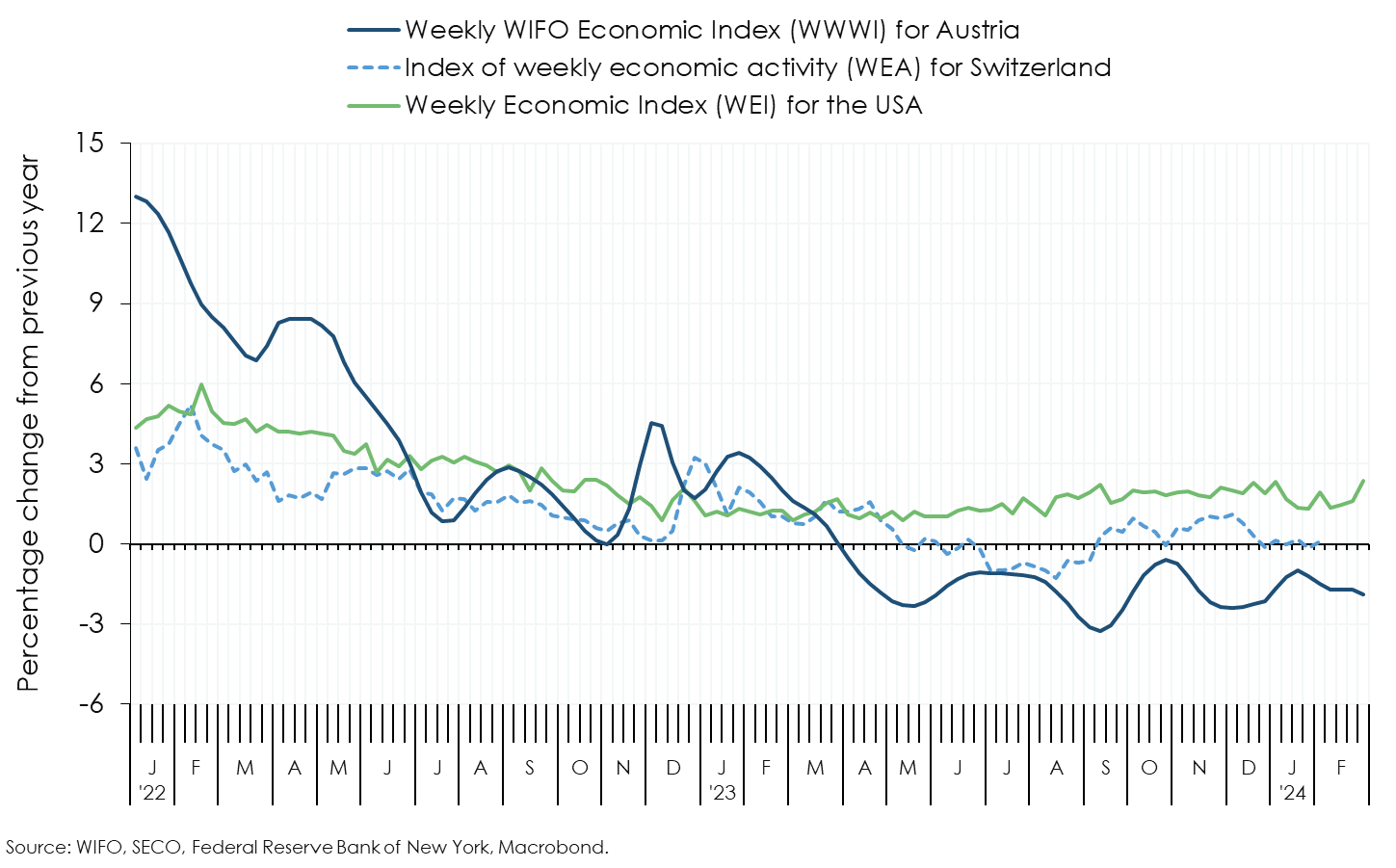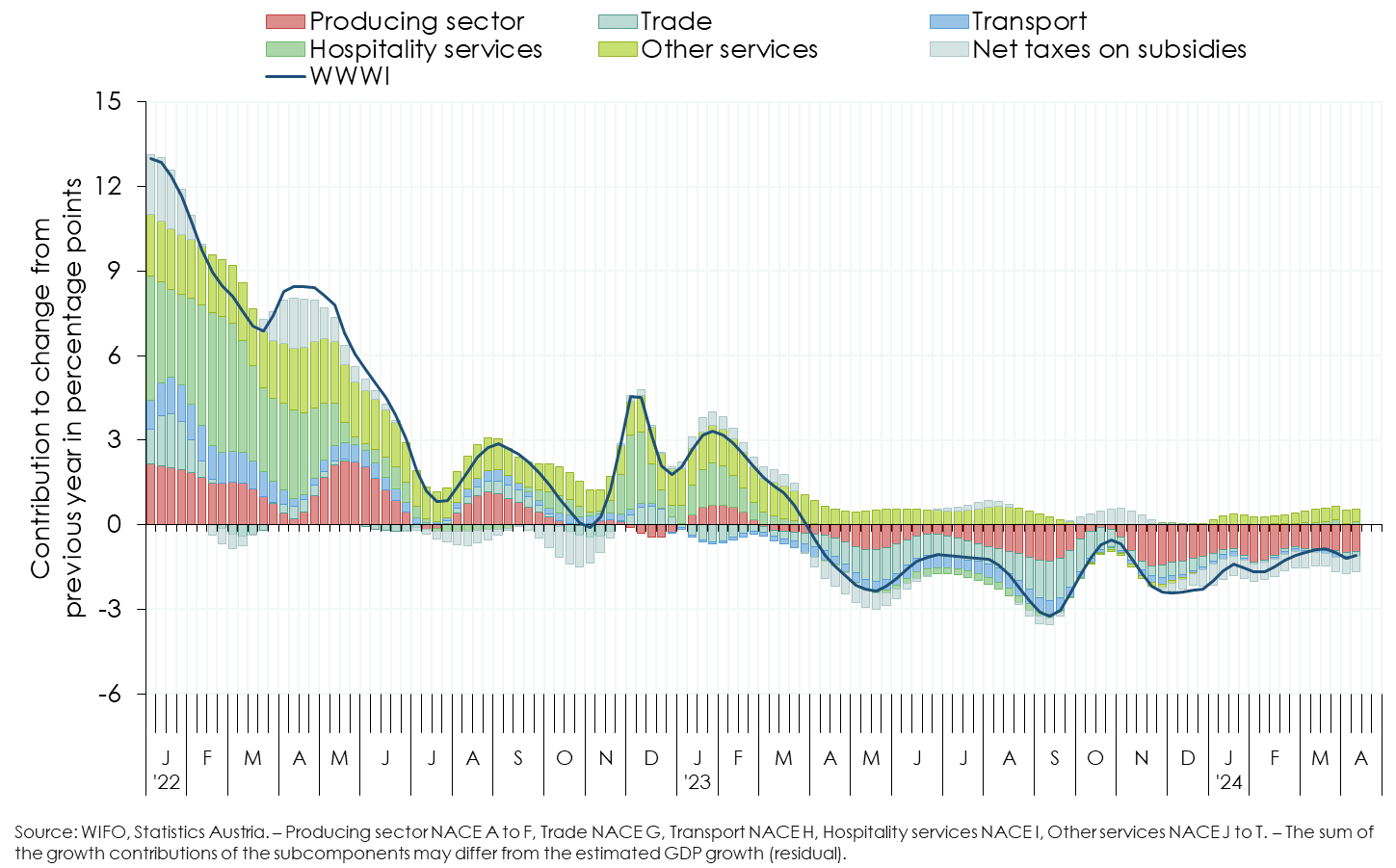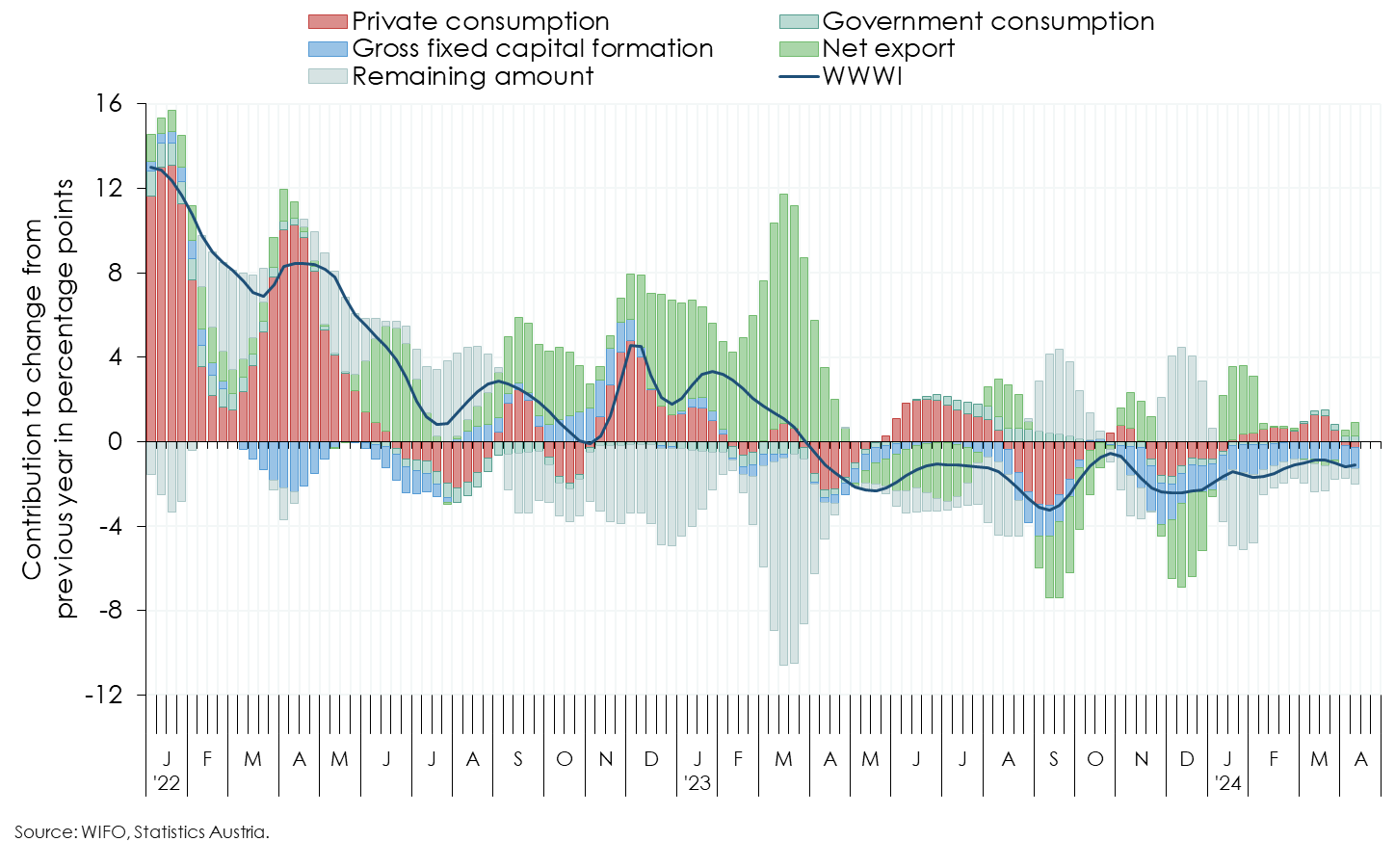Recent information on the publication of the WWWI: in the future, the Weekly WIFO Economic Index will be published on WIFO's website once a month.
Method change
The dataset and the econometric models for the historical decompositions and nowcasting were converted to seasonally unadjusted time series as of June 2022. This ensures maximum consistency between the weekly, monthly, and quarterly time series in a "mixed-frequency" approach. The monthly frequency is the focal point in the estimation system and (currently) also the usual reporting interval. However, the approach is flexible enough that a quick switch to weekly or bi-weekly reporting is ensured. In this case also the focus of the estimation system is shifted to the weekly frequency. In nowcasting – depending on the reporting date – data up to the respective previous week can be considered.
Most weekly time series, such as all non-cash transactions or the arriving as well as departing passenger and cargo flights at Vienna Airport, cannot be reliably seasonally adjusted due to the short observation period, as they are only available from the first calendar week of 2019. All nominal time series were deflated using short-term inflation forecasts with a time horizon of up to two months. The change from seasonally adjusted to unadjusted time series results in different estimates for the past (calendar week 1 of 2019 to calendar week 21 of 2022) as compared to the previous WWWI release of 10 June 2022. All estimated weekly and monthly GDP time series were backcasted to calendar week 1 of 2019 and January 2019, respectively, using the new methodology.
The estimated disaggregation and nowcasting models are formulated as dynamic factor models in a state-space representation. They are specified as forecasts of unobserved weekly values of observed quarterly or monthly time series by treating the weekly values as missing data and estimating them using the Kalman filter.
The estimation models for the historical decomposition and nowcasting of real GDP and 18 GDP subcomponents (and the presentation of results) are converted to changes against the previous year. Starting in June 2022 the results are presented as year-on-year rates of change and as contributions to GDP growth, respectively. Comparisons to pre-crisis levels will henceforth be reported as a comparison of the current month to the same month in 2019, rather than as a comparison to an average week in 2019 as in previous reports.
WWWI for GDP and its subcomponents
The inflation-adjusted volume of non-cash transactions, as an indicator of household consumption expenditures, shows a year-on-year increase for June, with a larger increase in May due to a lockdown-related base effect. This increase is also reflected in Google's retail and leisure mobility indicators. Real personal consumption expenditures were up just under 5 percent year-on-year in May and just over 1 percent in June. The increase is being driven by stronger demand for services, while consumption of goods as measured by retail sales has already been declining since May.
The growth momentum of the most important trading partners according to the indicators of the OECD's weekly GDP tracker for the Euro area and CEE 5 was lower in June than in May, but still positive. In contrast, truck mileage on Austria's highways and the volume of goods transported by rail decreased year-on-year. Derived from this, domestic goods exports in June were +15 percent and goods imports +12½ percent above the year-earlier level. The net contribution of foreign trade in goods to GDP growth averaged +1.1 percentage points for June (May +2.2 percentage points).
Both arriving and departing passenger flights at Vienna International Airport, as well as overnight stays by foreigners in Austria and spending by domestic tourists abroad, continued to increase significantly in June. In June the contribution of net travel to GDP growth was 0.5 percentage points.
The Google mobility indicators in the transport sector ("transit stations") as well as cargo flights show growth in June. Together with the above-mentioned development of truck and rail transport, we expect value added in the transport sector (OENACE H) to grow by around 3½ percent year-on-year in June.
In manufacturing, the number of people registered as looking for work is stagnating at a historically low level. Moreover, assessments of the current situation and short-term business expectations from the WIFO-Konjunkturtest (business cycle survey) remain at a robustly optimistic level. For June, we estimate growth of value added in the production sectors (primary production, manufacturing, energy and water supply and waste disposal – OENACE A to E) at just under +13 percent year-on-year (May +16 percent).
In the construction sector (OENACE F), the number of registered jobseekers continued to decline, and assessments of the current economic situation and business expectations for the coming months remain at a very high level. For June, value added in construction is expected to increase by almost 4 percent compared to the same month last year.
In tourism (restaurants and accommodation services, OENACE I), assessments of the current situation and expectations for the coming three months remain at an above-average level. The volumes of cashless transactions in the catering and hotel industry also show a significant increase compared with June 2021. The number of people registered as looking for work has continued to fall. For June, the number of overnight stays in Austria is expected to be 70 percent higher than in the previous year. In comparison to June 2019 (pre-crisis level), we expect an increase of around 2¼ percent. For the OENACE sector I, value added in June is estimated to be 11 percent higher than in the same month last year.
Value added in trade (OENACE G) is estimated to be almost 2 percent below the level of last year, based on non-cash retail sales. For the remaining market services (OENACE J to N), the continued decline in the number of people registered as looking for work and the development in the manufacturing sector described above suggest that momentum will remain favourable. In June, value added is expected to increase by +5¼ percent year-on-year. In other personal services (OENACE R to T), May showed a significant increase (+17 percent) due to COVID-restrictions still in place in the previous year, as most events were prohibited until 20 May 2021. For June 2022, the year-on-year increase is estimated at almost 7 percent based on non-cash event payments for event services. This is also an echo-effect of the lockdown last year: despite being open, this industry was not able to reach its full potential in June 2021 due to preparation times for events.






